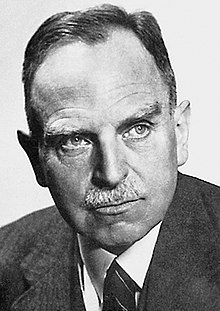
History of our Institute

1921
The Institute has its origins in the "Institut für Physikalische Grundlagen der Medizin" established in 1921 by citizens of Frankfurt as a foundation, the Oswalt Foundation. Friedrich Dessauer, an admirer of Wilhelm Roentgen, who endeavored to apply radiation physics to medicine and biology, became director of the institute. As a conservative member of parliament for the democratic "Zentrumspartei", Dessauer opposed the National Socialists' rise to power and was forced to emigrate in 1934.

1937
His successor, Boris Rajewsky, Dessauer's colleague and long-standing collaborator, founded in 1937 the "Kaiser Wilhelm Institute for Biophysics" in Frankfurt, as an Institute of the "Kaiser-Wilhelm-Gesellschaft zur Förderung der Wissenschaften e.V." (founded in 1911). Rajewsky coined the term "Biophysics" and consequently the institute became one of the first to be known by this name.

1945
From its beginnings into the sixties, scientists at the Institute studied mainly the biological and medical effects of ionizing radiation. Instrumentation from the pre-war period included a 3 MeV electron accelerator and one of the first electron microscopes which was however requisitioned (not without compensation) by the US in 1945.

1948
In February 1948 with the foundation in Göttingen of the "Max Planck Society for the Advancement of Sciences e. V." and under the presidentship of Otto Hahn, the Institute was re-established as the Max-Planck-Institute of Biophysics.

1960s/70s
In the 60s and 70s, the focus of research at the Institute changed towards the study of solute transport through biological and artificial membranes. Scientists at the Institute investigated successfully at that time the new field of cellular physiology, in particular the functional properties of the cell membrane and its proteins.

1960s/70s
The institute became an internationally competitive institute for membrane research. The splendid old "villa Speyer" in the Kennedyallee 70, a listed building on permanent loan from the City of Frankfurt, proved to be too small for three expanding departments, and therefore in 1972 a new laboratory building hosted two departments.

1972
The building known as the “Blue Tower” was located on a site adjacent to the Max-Planck-Institute for Brain Research, close to the university hospital. However there was the clear necessity to accomodate all Departments at the Institute within a single building.

2003
Finally in April 2003 the Max Planck Institute of Biophysics moved to a new building on the Riedberg campus of the Goethe University. This move has intensified scientific interactions between research groups and strengthened contacts with fellow researchers of the University's biology, chemistry, and physics laboratories next door.